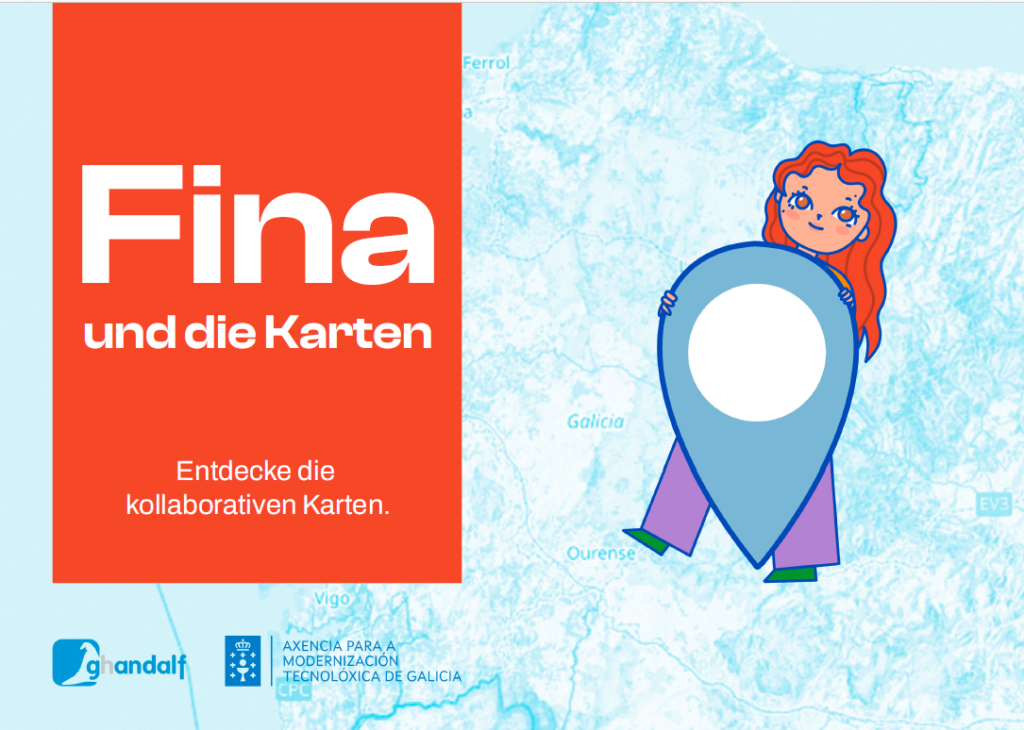Con “Fina e le mappe” si vuole entusiasmare i bambini per la cartografia collaborativa. Gli autori e i traduttori sperano che alcuni di loro partecipino al progetto comunitario OpenStreetMap, che mappa il mondo e mette i dati a disposizione di tutti, in modo simile a Wikipedia. Il libro mira a promuovere l’educazione aperta e la costruzione della conoscenza collettiva e può essere scaricato gratuitamente come eBook (PDF). L’età consigliata è tra gli 8 e i 12 anni.

Il libro per bambini (“Fina e os mapas”) riccamente illustrato sulla cartografia e sulle mappe collaborative è stato originariamente scritto da Pablo Sanxiao in galiziano e spagnolo. È già stato tradotto in inglese, francese, italiano, catalano e portoghese (brasiliano) ed è ora disponibile anche in tedesco (svizzero). Può anche essere tradotto in altre lingue, in linea con l’idea di un’educazione aperta, ed è quindi disponibile anche nel testo grezzo (Markdown).
Ecco un riassunto: Fina è una ragazza che ama la tecnologia e che va spesso a trovare sua nonna in bicicletta per godersi le sue storie emozionanti e i suoi deliziosi biscotti. Quando un giorno salta la corrente, la nonna mostra a Fina dei vecchi atlanti e le racconta di come un tempo le mappe venivano disegnate a mano, suscitando l’interesse di Fina per la cartografia. Ispirata, Fina scopre il progetto OpenStreetMap, inizia a inserire digitalmente i luoghi insieme a sua nonna e diventa lei stessa una cartografa digitale.
Consiglia! Sito web e download: https://finaeosmapas.ghandalf.org/



